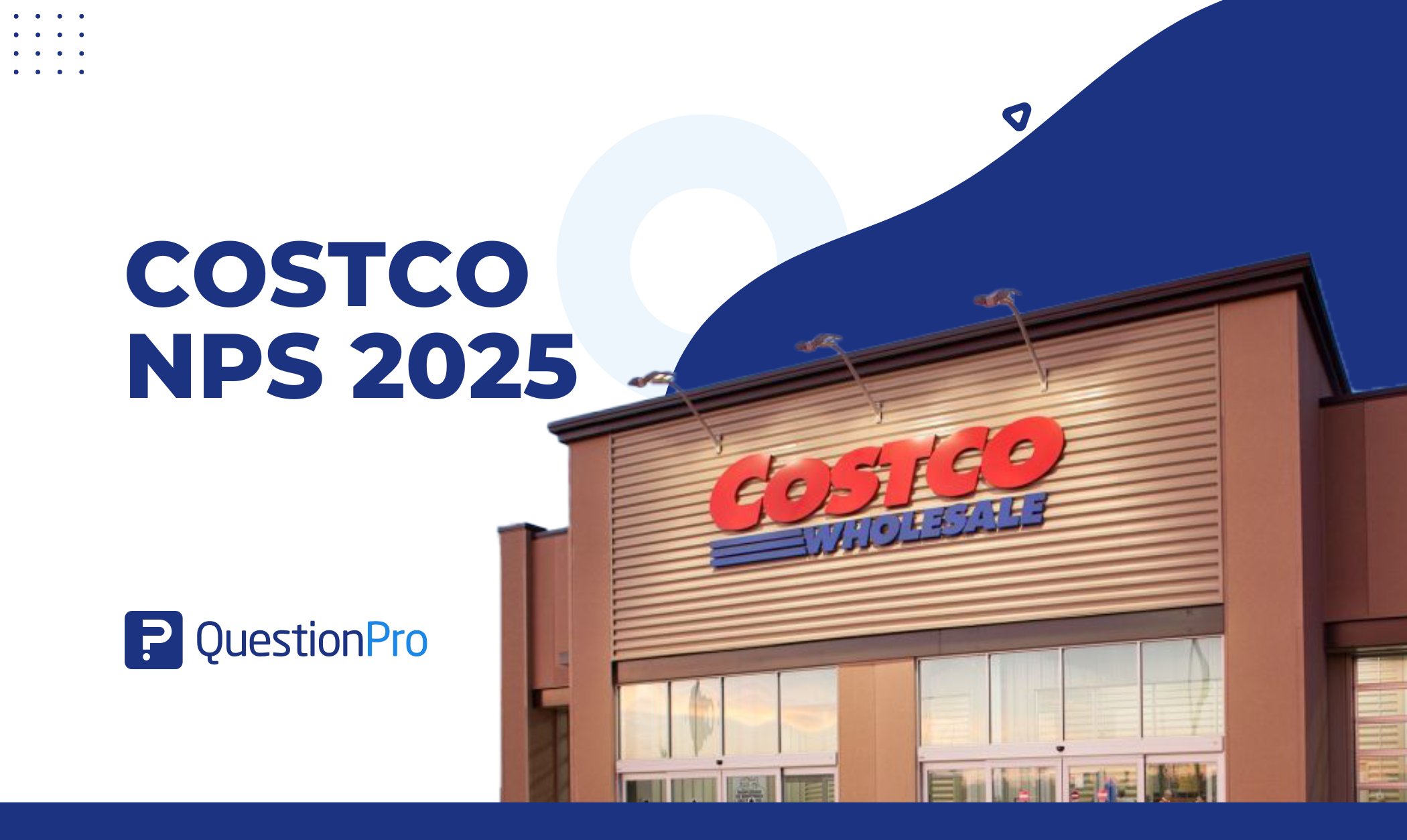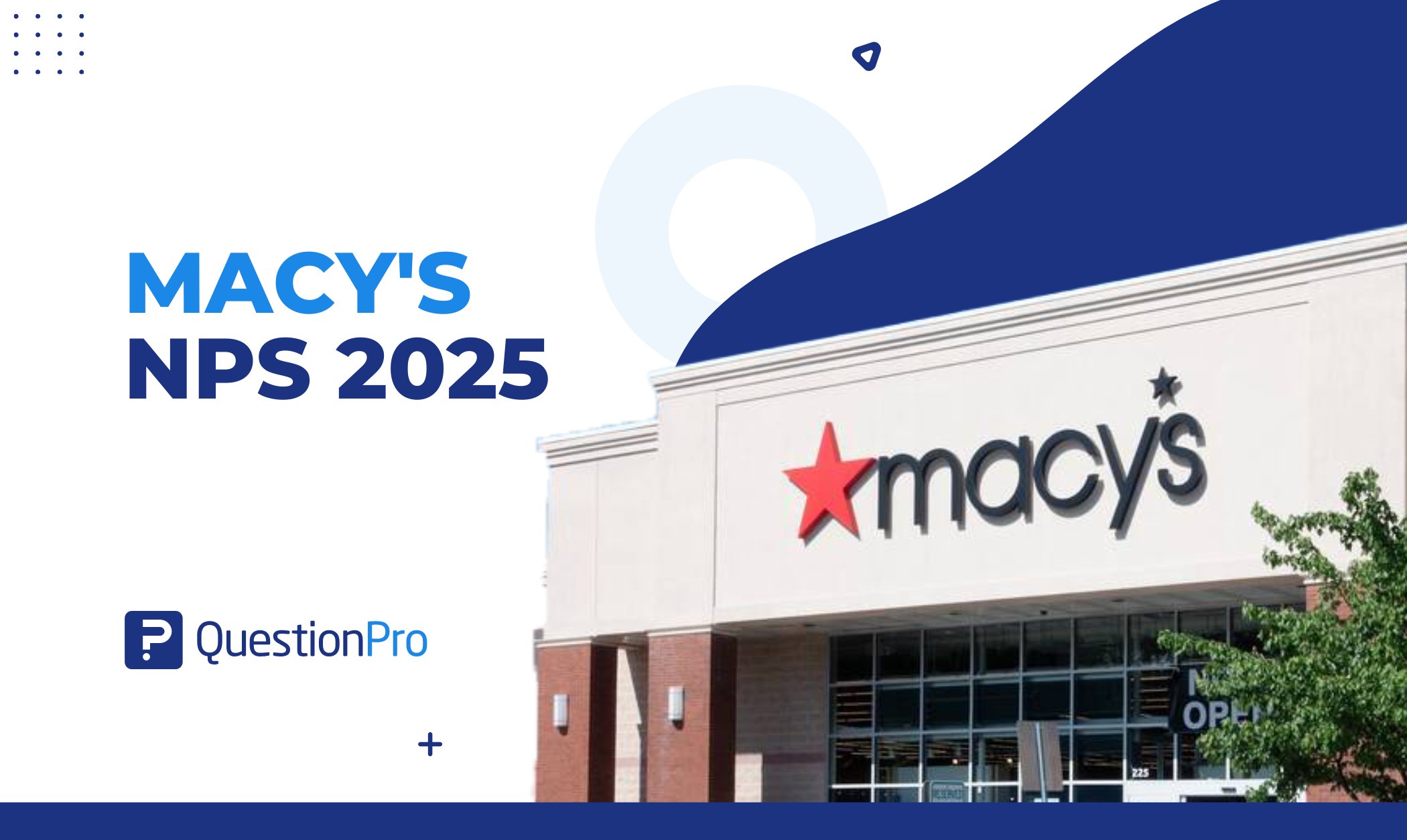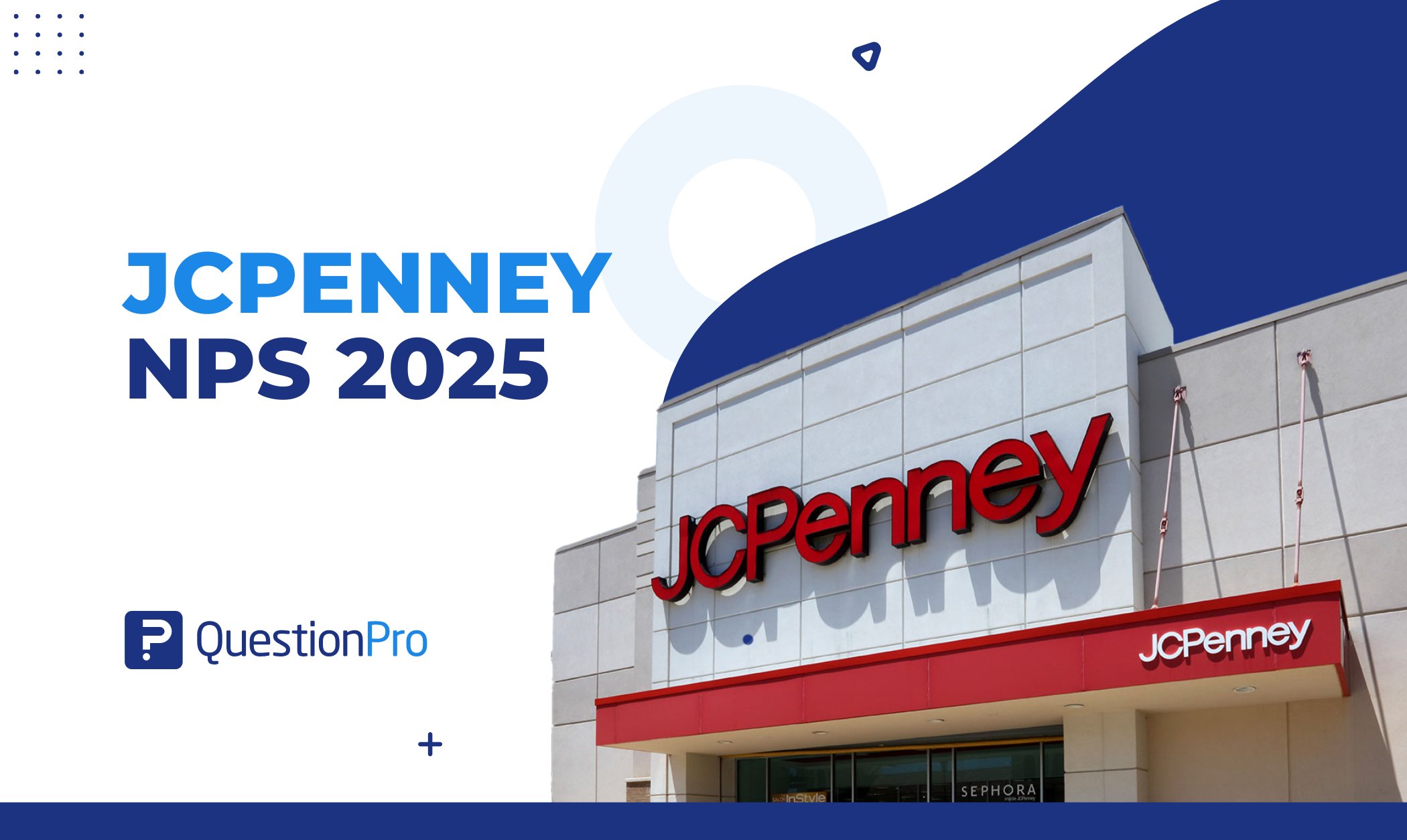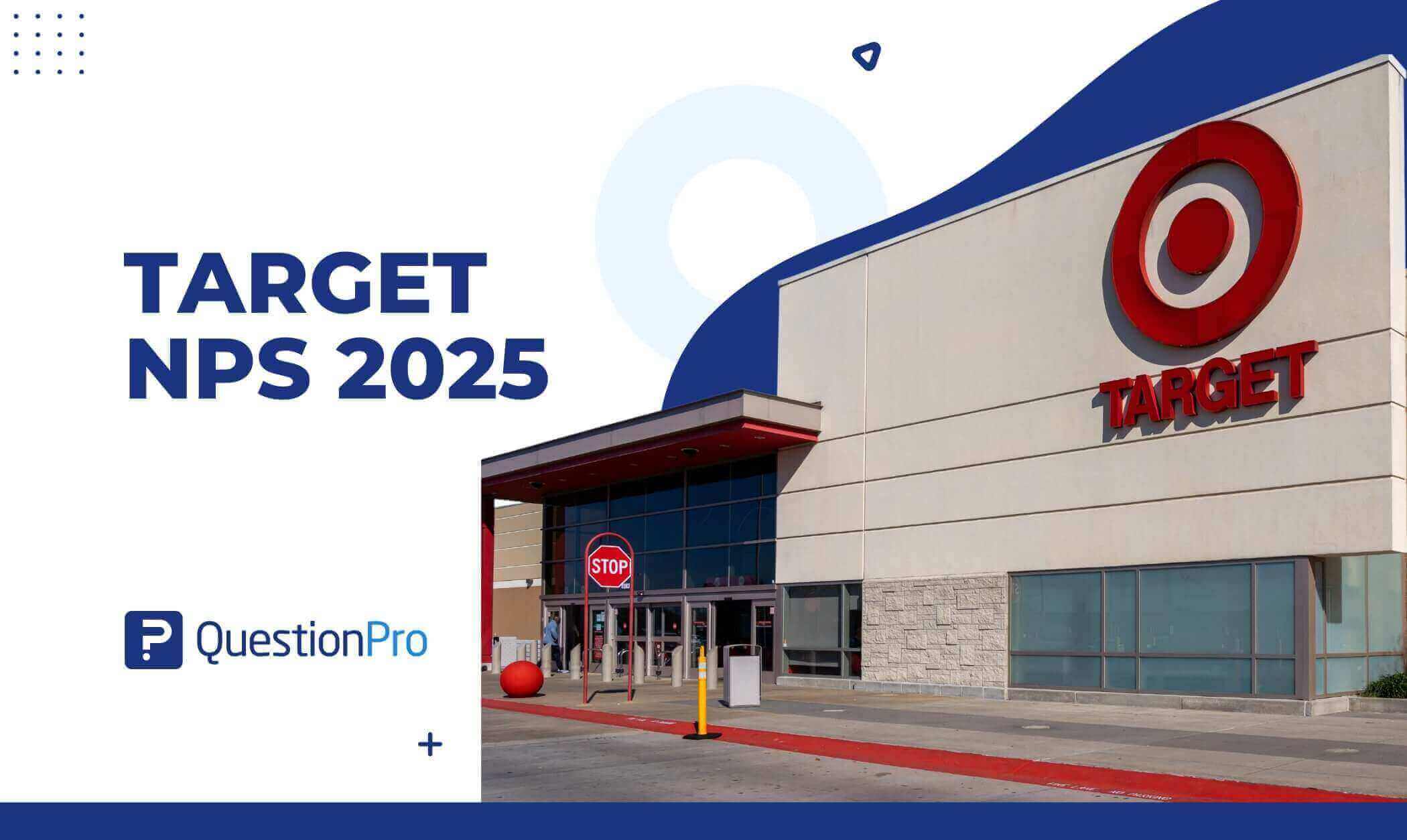
What turns a casual shopper into a loyal fan? Maybe it’s the easy checkout, a helpful employee, or simply finding everything you need in one trip. That moment when a customer thinks, “I’d totally recommend this place”-that’s what the Net Promoter Score (NPS) is all about.
In this post, we’ll explore Target NPS score for 2025, how it compares to the retail average, and what the numbers tell us about customer loyalty. We’ll also look at what Target is doing right, where there’s room to grow, and how small changes can make a big difference.
What is Net Promoter Satisfaction Score?
Net Promoter Score, or NPS, is a simple and powerful way to find out how customers feel about your brand and whether they would suggest or recommend it to someone else. It’s a go-to metric in industries like retail and grocery because it offers a quick snapshot of customer loyalty and satisfaction.
At the heart of NPS is just one key question to ask or to be asked:
“On a scale of 0 to 10, how likely are you to recommend us to a friend or colleague?”
Depending on the score given, respondents fall into three categories:
- Promoters (9–10): These are your biggest fans. They’re loyal, satisfied, and likely to share their positive experience with others.
- Passives (7–8): Content but not enthusiastic, they’re not actively recommending you, and might be swayed by a competitor.
- Detractors (0–6): These customers didn’t have a great time and may warn others away.
The actual score is calculated with a simple formula:
NPS = % of Promoters – % of Detractors
What you’re left with is a single number that reveals how strong or fragile your customer relationships are. A high NPS suggests things are going well. A lower score might be a red flag for areas that need attention.
Want to know if your score is on the right track? Comparing it to others in your industry can help. NPS benchmarks provide the context you need to see how you stack up, whether you’re leading the pack or need to catch up.
In short, NPS doesn’t just measure satisfaction. It gives you insight into advocacy, trust, and future growth potential, all from one straightforward question.
Target NPS Performance Score
Target NPS Score is currently sitting at 33, just shy of the retail industry benchmark of 37, as reported in QuestionPro’s Q1 2025 Benchmarking NPS and CSAT Report. While not far off the mark, the score suggests there’s room to strengthen customer relationships and boost loyalty.
Here’s how the responses break down:
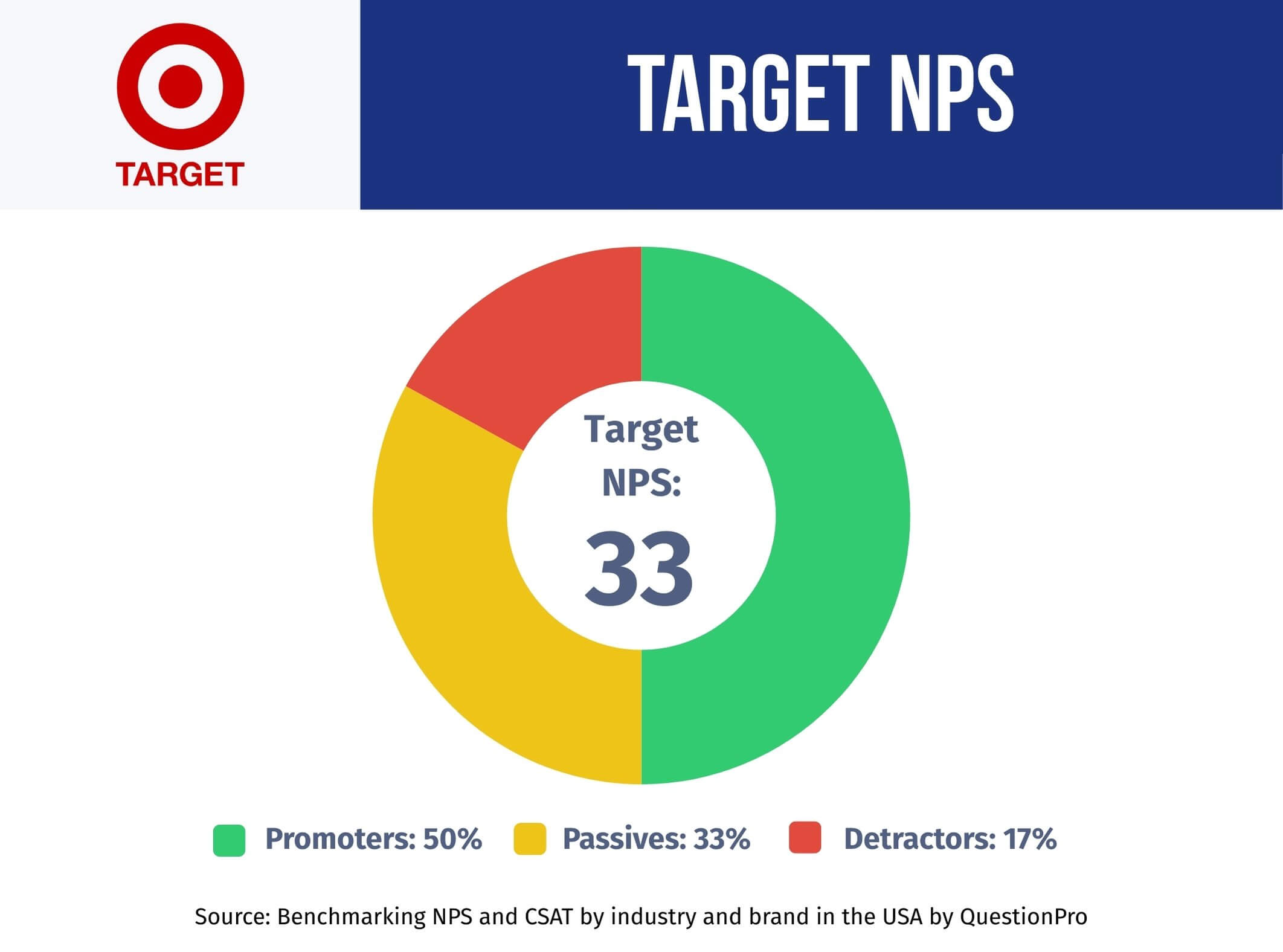
- Promoters: 50%
Half of Target’s customers are enthusiastic supporters who would happily recommend the store to others.
- Passives: 33%
One-third feel generally satisfied but not quite energized enough to spread the word.
- Detractors: 17%
A smaller, but notable group left less impressed and may be sharing those experiences with others.
So, what does this mean in context?
Compared to retail leaders, Target’s slightly lower score suggests it’s doing well, but not yet standing out.
The good news? With half of the customers already in the Promoter camp, there’s a solid foundation to build on. Reducing Detractors and turning more Passives into Promoters could help Target move beyond “almost there” and into “exceeding expectations.”
In short, Target has loyal fans, but there’s still untapped potential to turn more customers into vocal advocates.
How Do Target and Retail Industry Benchmarks Compare?
When it comes to customer loyalty and satisfaction, Target is close, but not quite ahead of the curve. According to QuestionPro’s Q1 2025 Benchmarking NPS and CSAT Report, the average NPS across the retail industry is 37. Target NPS score comes in at 33, a bit behind companies like Best Buy (43), Sam’s Club (42), and The Home Depot (43).
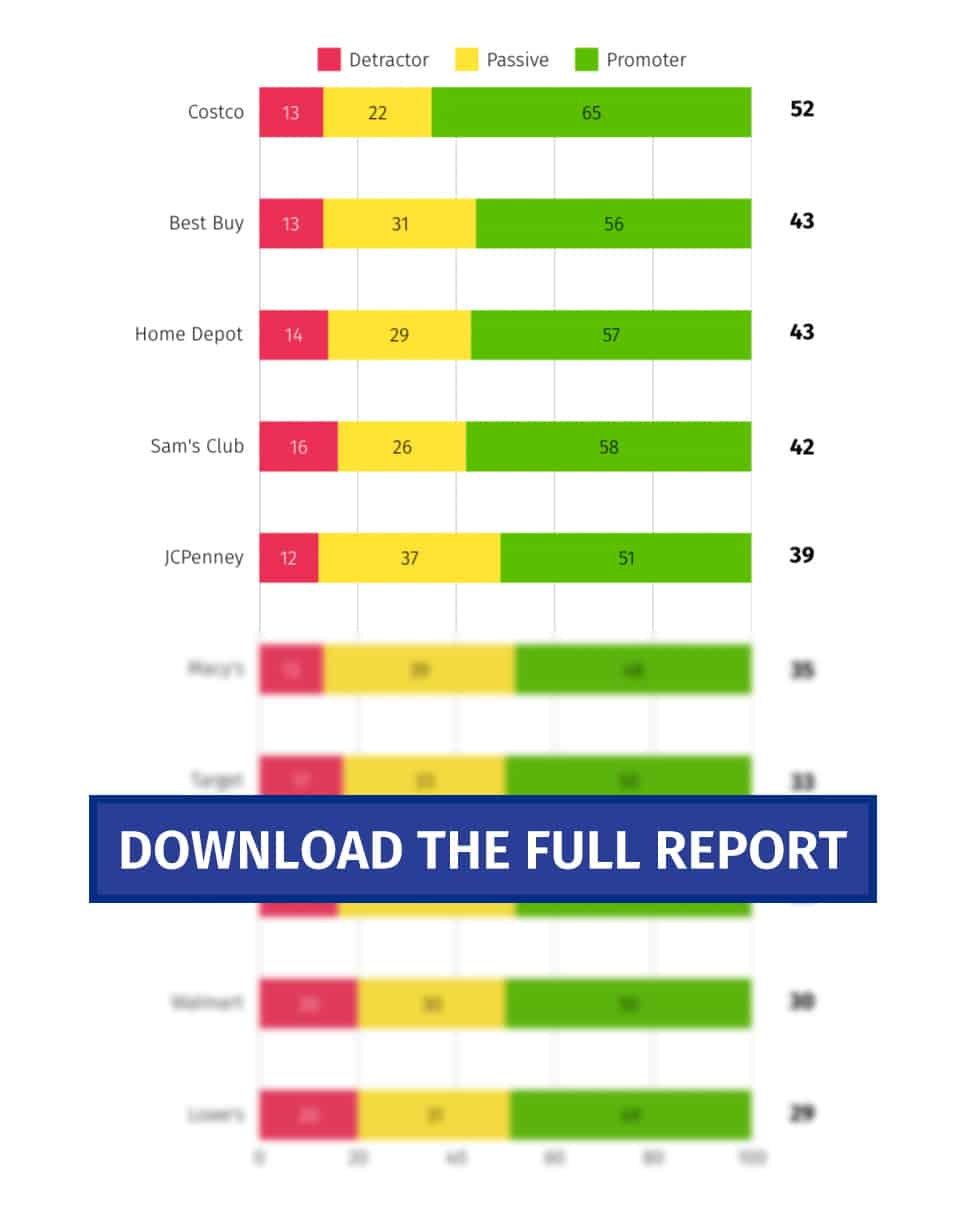
So what’s the story behind the numbers?
While Target has a strong base of loyal customers, other retailers are doing more to inspire those glowing recommendations. Brands often lead by offering experiences that go beyond expectations, whether that’s standout service, great deals, or a consistent shopping experience that keeps people coming back.
That doesn’t mean Target is far off. With 50% of its customers falling into the Promoter category, the potential is already there. A few tweaks—like reducing negative experiences or turning passive shoppers into active fans—could help Target close the gap.
The big picture? In a crowded marketplace, even a few points can make a real difference. Comparing NPS scores helps highlight what’s working and where there’s room to grow. And that’s exactly what these retail benchmarks are for: seeing how your customer experience measures up, and where you can push it even further.
Are you curious about how others rank? The full report from QuestionPro includes insights from 1,000 participants and is updated every quarter to reflect honest customer feedback. It’s worth a look if you’re aiming to better understand the loyalty landscape.
Why Is Target’s NPS Just Below the Benchmark?
With an NPS of 33, Target falls slightly short of the retail industry average of 37, but it’s not far off. The company shows promising signals. Target’s customer satisfaction score (CSAT) is a solid 78%, and 88% of shoppers say they plan to make a purchase again. That’s a strong indicator of ongoing trust and brand affinity.
So why the gap?
It may come down to turning more satisfied customers into vocal advocates. While many enjoy the Target experience, fewer are going the extra step to recommend it. Closing that gap may involve focusing on standout moments and experiences that feel not only reliable but also memorable.
- Target has a loyal base and positive intent. With a few smart moves to amplify delight, that NPS could easily rise and match (or even beat) the benchmark.
- Target’s customers are generally pretty happy, but if the goal is to raise that NPS, the challenge is turning more of those satisfied shoppers into vocal fans.
How Can Target Turn Satisfaction Into Loyalty?
Here’s how Target can make that happen:
- Lean Into What’s Already Working
Target has a strong foundation, with high satisfaction and many returning shoppers. The basics are solid: clean stores, fair prices, and easy returns. Doubling down on these strengths—and making sure they’re consistent across every location—can reinforce what customers already appreciate.
- Add a Personal Touch
The little things matter. A warm greeting, a helpful associate, or a small gesture like a personalized deal or thank-you message can make someone feel seen. These moments often stick with customers and can be the reason they tell a friend.
- Listen and Act on Feedback
Asking customers why they gave a certain score opens the door to real insights. Maybe checkout lines are too long, or a favorite item’s always out of stock. Whatever it is, showing that you’re listening—and making changes—can quickly shift someone from “meh” to “wow.”
- Celebrate Word of Mouth
Sometimes people just need a nudge. Whether it’s a simple referral reward or exclusive perks for loyal shoppers, giving folks a reason to recommend you makes it more likely they will.
At the end of the day, turning satisfaction into loyalty isn’t about a huge overhaul—it’s about thoughtful improvements and memorable moments. If Target focuses on those, the NPS will follow.
How Can You Measure and Improve Your NPS?
Understanding how your customers feel doesn’t have to be complicated. With QuestionPro, measuring and improving your Net Promoter Score (NPS) is a smooth, straightforward process. Here’s how you can get started:
1. Start with the Right Survey
Begin by asking the classic NPS question:
“On a scale from 0 to 10, how likely are you to recommend us to a friend or colleague?”

QuestionPro offers a ready-made NPS survey template to make the setup quick and easy. Want to know why someone gave a certain score? Add the AskWhy follow-up to gather open-ended feedback that gives you more than just a number.
2. Reach Your Audience Anywhere
Once your survey is ready, share it with your customers wherever they are, through email, SMS, QR codes, social media, or direct links. If you’re targeting specific customer segments, you can use QuestionPro Audience to find the right respondents based on demographics, location, or behaviors.
3. Track Feedback in Real Time
As responses roll in, your NPS is calculated instantly. You’ll see a live breakdown of Promoters, Passives, and Detractors, plus trends and patterns right on your dashboard. No waiting, no spreadsheets, just clear insights at your fingertips.
4. Use the Data to Make Smart Changes
NPS becomes truly valuable when you act on it. Use the feedback to improve touchpoints like support, checkout, or delivery. Focus on areas where Detractors are struggling, and turn Passives into Promoters by addressing their concerns. QuestionPro even lets you compare your score to industry benchmarks, so you can see how you stack up.
With the right tools and a bit of insight, NPS isn’t just something you measure—it becomes a key part of how you grow. QuestionPro makes it easy to listen, learn, and lead with better customer experiences.
Curious How Your NPS Compares?
Grab the Q1 2025 NPS Benchmark Report to see how top brands are winning customer loyalty and where your score fits in.
Need help improving? QuestionPro’s experts are ready with personalized tips to boost satisfaction and retention.
Target isn’t the only company in the big box retail industry with valuable lessons for those looking to improve their customer service and experience. Below, we recommend a few articles where you can learn how other major brands manage to maintain a high NPS and a loyal customer base — you’ll surely find some useful insights along the way.




